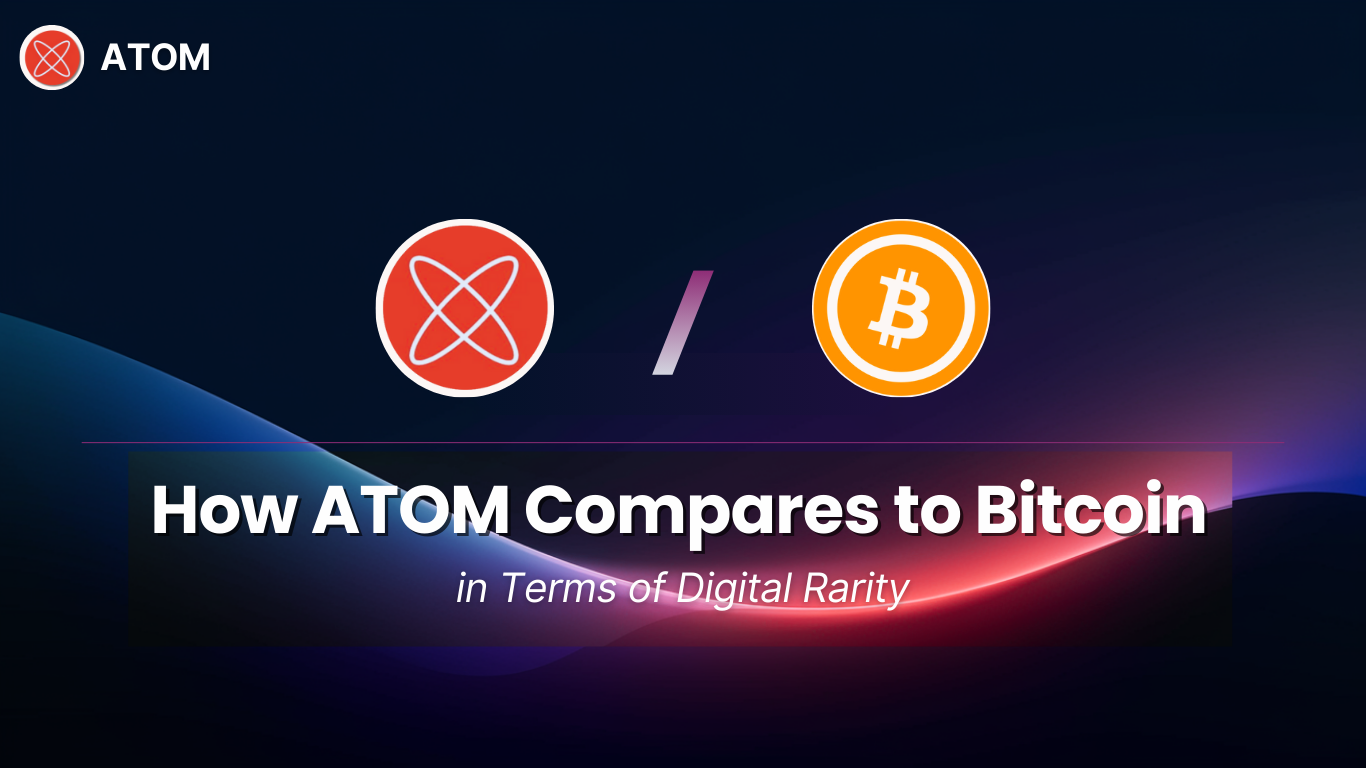From the Blogs
Learn how to grow your business with our expert advice.

How ATOM Compares to Bitcoin in Terms of Digital Rarity
Introduction: The Power of Scarcity in Crypto
Scarcity has always been a defining characteristic of valuable assets. Whether it’s gold, rare art, or land in prime locations, the fewer units available, the more valuable they tend to become. In the cryptocurrency world, Bitcoin set the standard for digital scarcity, positioning itself as "digital gold" with a fixed supply of 21 million coins.
But what happens when scarcity is taken to the absolute extreme? That’s where ATOM XRPL enters the conversation. Unlike Bitcoin, which has millions of coins in circulation, ATOM exists as a single unit. It is a true experiment in the limits of digital rarity, testing how extreme scarcity impacts value.
So, how do Bitcoin scarcity vs. ATOM crypto compare? Is Bitcoin’s deflationary model superior to ATOM’s absolute exclusivity? This blog will break down the similarities, differences, and long-term value propositions of both assets, helping you understand which one represents the most compelling form of digital rarity.
Understanding Bitcoin’s Scarcity Model
1. Fixed Supply: The 21 Million Cap
Bitcoin was designed with a strict supply limit of 21 million coins, meaning no more Bitcoin will ever be created beyond this number. This built-in scarcity is one of the main reasons why Bitcoin has gained value over time.
Bitcoin’s scarcity model works because of its mining system:
- New BTC is introduced through mining rewards, which started at 50 BTC per block in 2009.
- Every four years, the Bitcoin network undergoes a halving event, cutting block rewards in half.
- As of 2024, the current reward is 3.125 BTC per block, and by 2140, all 21 million BTC will be mined.
The halving process reduces the rate of new Bitcoin entering circulation, creating a deflationary effect that has historically led to price appreciation.
2. Bitcoin’s Scarcity Compared to Traditional Assets
Bitcoin’s scarcity is often compared to gold because both have a finite supply. However, Bitcoin has some advantages over gold:
- It is verifiable – Unlike gold, whose true global supply is uncertain, Bitcoin’s supply is fully transparent on the blockchain.
- It is portable – Bitcoin can be stored on a USB drive, whereas moving physical gold requires significant effort.
- It cannot be counterfeited – Unlike fiat currency, which can be printed at will, Bitcoin’s scarcity is mathematically enforced.
Bitcoin’s scarcity has contributed to its rise as a store of value, but how does it compare to ATOM?
How ATOM XRPL Takes Scarcity to the Extreme
1. The Rarest Asset in Crypto: A Total Supply of 1
While Bitcoin’s 21 million supply cap is impressive, ATOM is in an entirely different category of rarity. Only one ATOM exists, and no additional tokens will ever be created.
This level of scarcity is unparalleled. Even the rarest NFTs or collectibles usually have multiple editions, but ATOM stands alone as the only digital asset with a total supply of one.
2. Divisibility: How Fractional Ownership Works
Since only one ATOM exists, it has been made divisible into sub-atomic units (0.000001 ATOM), allowing multiple holders to own small fractions of the rarest digital asset ever created.
This divisibility makes ATOM functionally similar to Bitcoin in some ways:
- Bitcoin can be divided into 100 million satoshis (0.00000001 BTC per satoshi).
- ATOM can be divided into 1 million sub-atomic units (0.000001 ATOM per unit).
This ensures that even as ATOM’s value grows, it remains accessible to more investors, much like how people can own fractions of a Bitcoin rather than an entire coin.
3. Market-Driven Scarcity vs. Programmed Scarcity
Bitcoin’s scarcity is gradually enforced through mining halvings, while ATOM’s scarcity was established from day one.
- Bitcoin's supply shrinks over time due to halvings, which creates predictable scarcity.
- ATOM’s scarcity is immediate and absolute, meaning there is no waiting period for supply reduction—it is already at its rarest state.
This makes ATOM the ultimate test of pure digital exclusivity—it does not need halvings, mining, or deflationary mechanics. It is simply the rarest asset by design.
Bitcoin Scarcity vs. ATOM Crypto: Key Comparisons
FeatureBitcoin (BTC)ATOM XRPLTotal Supply | 21 million BTC | 1 ATOM
Scarcity Model | Halving cycles reduce supply over time | Absolute scarcity from creation
Divisibility | 100 million satoshis per BTC | 1 million sub-atomic units per ATOM
Creation Process | Mined over 100+ years | Fully issued from day one
Market Liquidity | High, with BTC traded on global markets | Lower, as ownership is highly exclusive
Long-Term Scarcity | Deflationary due to halvings | Permanently scarce—no further supply changes
Which Holds More Long-Term Value?
1. Store of Value Potential
Bitcoin has already proven itself as a store of value, with institutional investors treating it as digital gold. However, ATOM’s extreme rarity could make it even more valuable in the long run.
If Bitcoin is digital gold, ATOM is a one-of-a-kind artifact, like the Mona Lisa of crypto. Its rarity gives it collector’s value, which could make even small fractions of ATOM highly desirable as demand increases.
2. Market Adoption and Liquidity
Bitcoin benefits from high liquidity and widespread adoption. Major financial institutions, ETFs, and governments are starting to recognize it as an alternative asset class.
ATOM, however, is still in its early adoption phase. Because only one token exists, its market liquidity is naturally lower. However, as more people recognize its unparalleled scarcity, demand for sub-atomic units could grow, creating a highly valuable niche market.
3. Future Growth Potential
Bitcoin’s growth is tied to increasing institutional adoption, demand as a hedge against inflation, and mainstream recognition.
ATOM’s growth, on the other hand, is based on its reputation as the rarest asset in crypto. As investors and collectors seek the ultimate digital exclusivity, ATOM’s value could scale dramatically over time.
Where to Buy and Hold ATOM
If you’re interested in owning a fraction of ATOM, it is available on XRP Ledger-based decentralized exchanges:
- First Ledger – Trade ATOM Here
- Sologenic – ATOM on Sologenic
- XMagnetic – Trade ATOM on XMagnetic
Conclusion: The Ultimate Scarcity Play
Bitcoin revolutionized digital scarcity by introducing a fixed supply with gradual deflation. However, ATOM XRPL takes scarcity to its absolute limit—there is only one, and there will never be more.
While Bitcoin benefits from institutional backing and mainstream adoption, ATOM offers something even rarer: true digital exclusivity.
For those seeking the ultimate scarcity investment, ATOM is not just another cryptocurrency—it is a one-of-a-kind experiment in digital value that may never be replicated.
